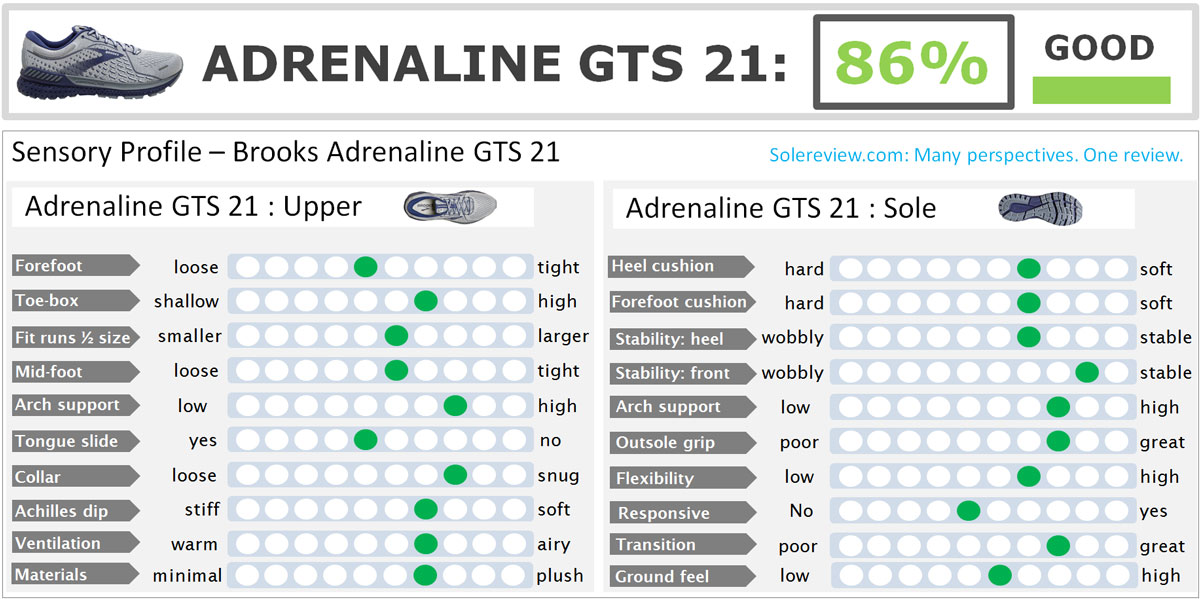Our review of the updated model – the Brooks Adrenaline GTS 22 – is available to read.
INTRODUCTION
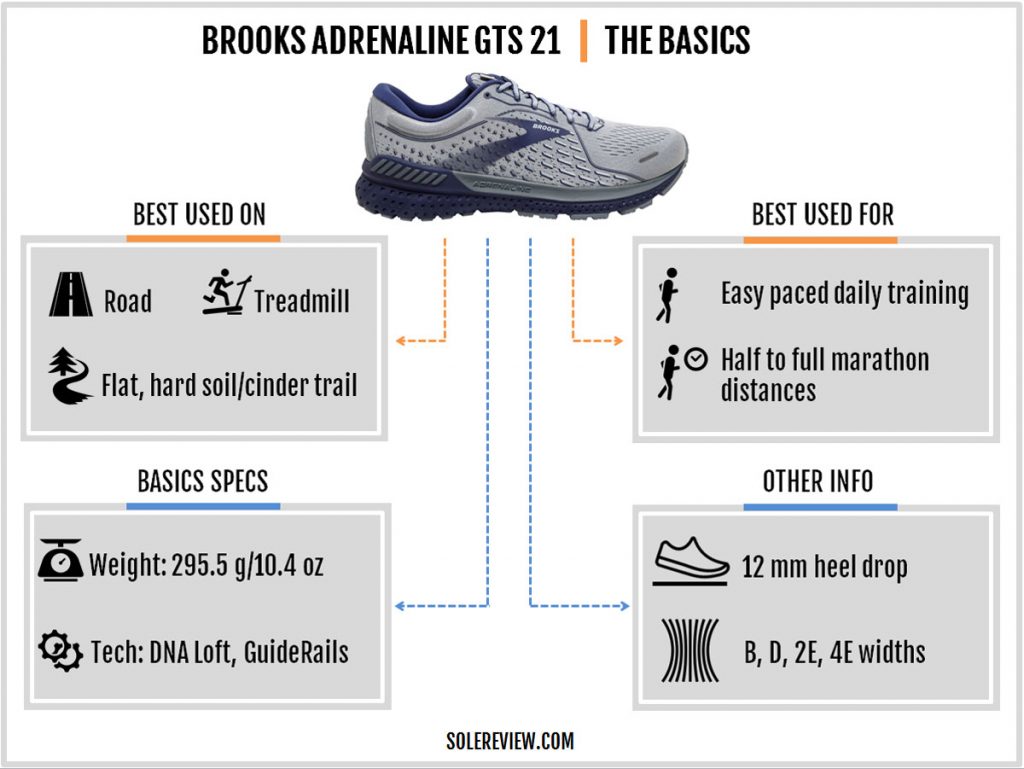
If industry reports are anything to go by, Brooks does rather well in running specialty channels. As a matter of fact, they do so well that they are market leaders in certain markets.
And it’s probably not the Brooks Hyperion Tempo or Hyperion Elite that pays the bills. It’s their bread and butter assortment made up of familiar names like the Ghost, Glycerin, and the Adrenaline.
At the same time, it’s hard to keep everyone happy. Brooks receives some flak from running shoe nerds who bemoan the absence of cutting edge cushioning materials in their staple products.
Though Brooks has a foam like the DNA Loft, let’s face it – they aren’t superior to E-TPU or PEBA alternatives. The DNA Flash is nice, but then the Hyperion Tempo is an expensive shoe.
And yet, Brooks has one thing going for it. The brand is a crowd-pleaser with a lot of product consistency. There are very few shoe brands that deliver a consistent fit and ride experience no matter what year it is.
Runners who are wary of dreaded annual shoe ‘updates’ take refuge in Brooks’s cocoon of consistency, even though the ride experience may not match the cushioning standards set up by expanded Polyurethane and their ilk.
However, that doesn’t mean that newer Brooks models are devoid of changes.
The Adrenaline GTS, for example, received a major update over three years ago. The firmer medial post no longer makes an appearance, thus transforming the Adrenaline from a traditional motion control shoe to a ‘supportive neutral’.
And it’s turning softer too, as if it was intended to be a companion shoe for the Brooks Ghost.
And it is.
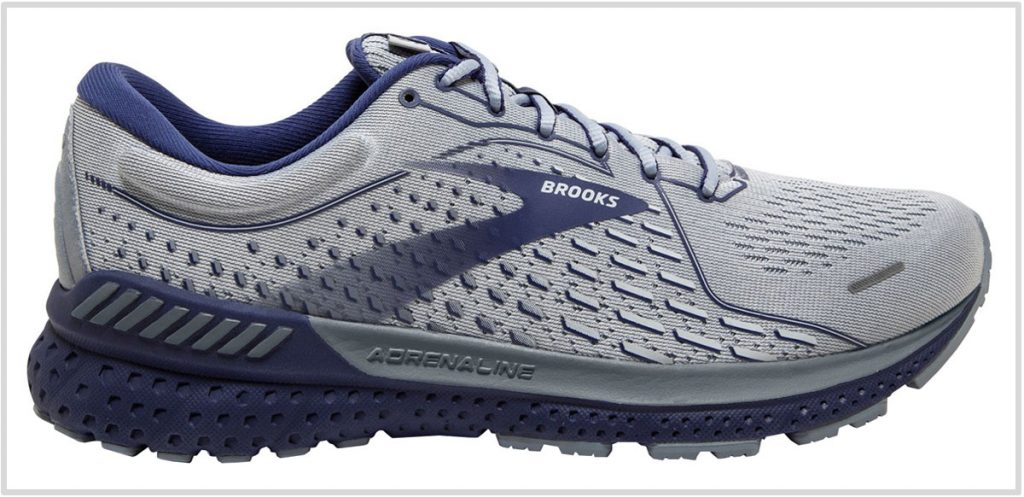
Except for the raised ‘Guide rails’ that increases the sense of under-arch support, the Adrenaline GTS 21 feels a lot like the Ghost underneath. The changes for 2021 also mirrors that of the Ghost. Like the latter, the midsole is now single piece instead of using a separate heel crash pad that existed on the GTS 19 and 20.
The result is a neutral shoe with enhanced under arch support and a ride quality that is smoother than the previous Adrenaline. After all, Brooks does call it the GTS – ‘Go To Support’ for short.
The upper fit also represents the Brooks archetype; in other words, it is the satisfying bundling of plush materials in a true to size form. And add four widths to that.
THE RIDE EXPERIENCE
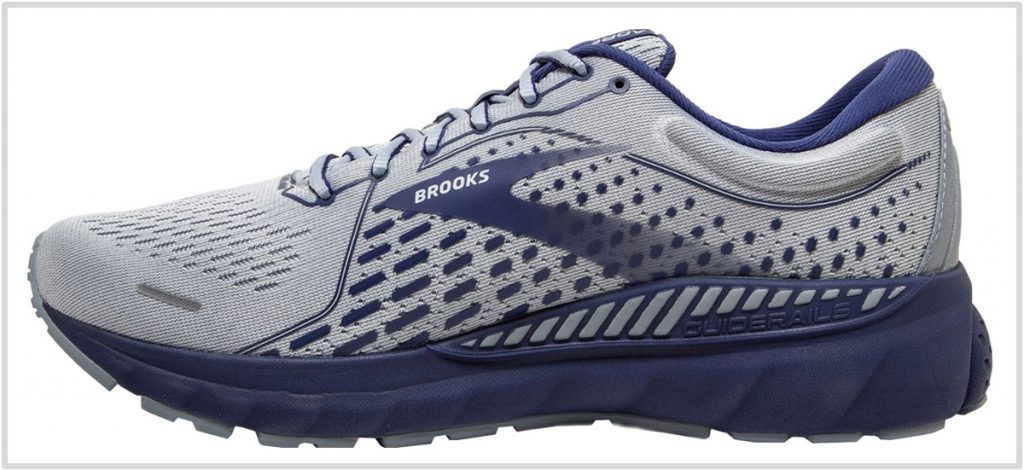
The Adrenaline GTS 21 is an uncomplicated product. There’s no second-guessing the ride quality here; it is exactly what it appears from the outside. Once you go for a run in them, you realize that there are no hidden gotchas or elements of discovery. There are none.
This is running shoe traditionalism at its best. The midsole has a 12 mm heel to toe gradient, like how most running shoes used to be in the old days. That means there won’t be any sore Achilles that usually accompanies those pesky 4 mm drop trainers.
A 12 mm offset is an indication that most of the cushioning resides under the heel. And that’s true – the Adrenaline GTS 21 is very much a rearfoot striker’s shoe.
This isn’t to say that forefoot strikers should steer clear of the GTS; it’s just that the cushioning distribution isn’t evenly spread. Forefoot/midfoot strikers will be able to take advantage of the softer blown rubber outsole for padded landings and transitions.
Even though the midsole is thickest at the back, the Adrenaline GTS 21’s forefoot isn’t bereft of ride comfort.
A molded (and removable) sockliner adds a layer of plushness that is often mistaken for the midsole cushioning and responsiveness. We discovered a long time ago that sometimes, a running shoe is nothing without its insole.
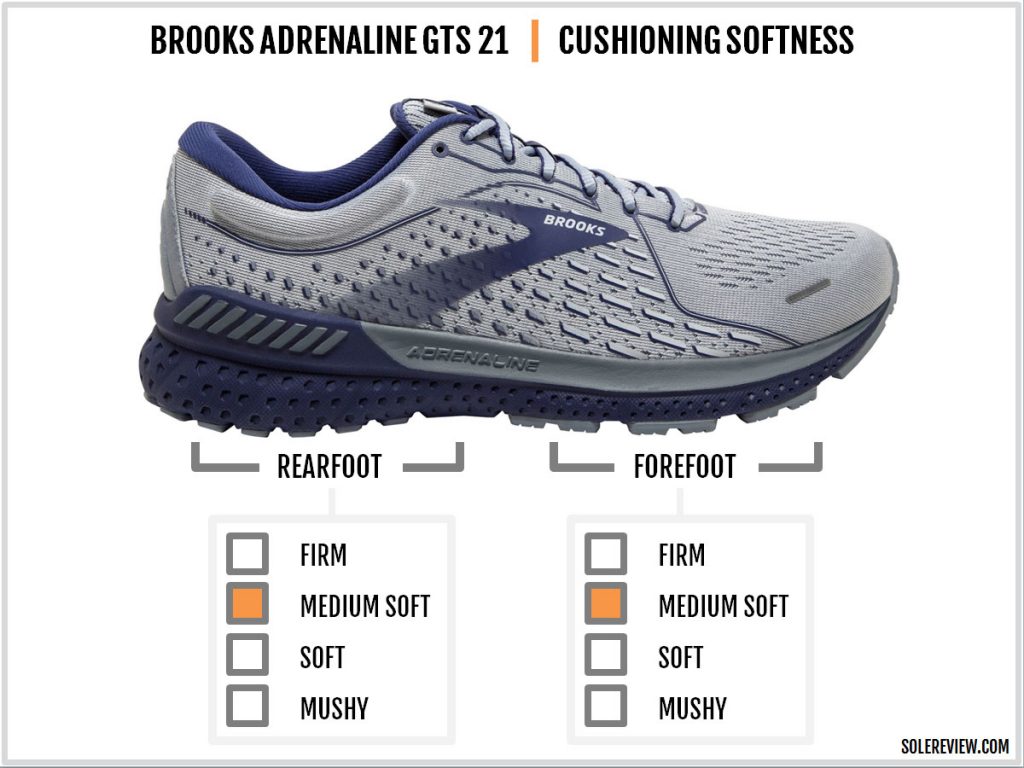
The Adrenaline GTS 21 is also a much softer shoe than it once used to be.
There’s not much difference between, say the 20 and 21, but when compared to legacy models like the GTS 17, the difference is stark. The Adrenaline of today is softer than the vintage Ghost(s), so that’s saying something.
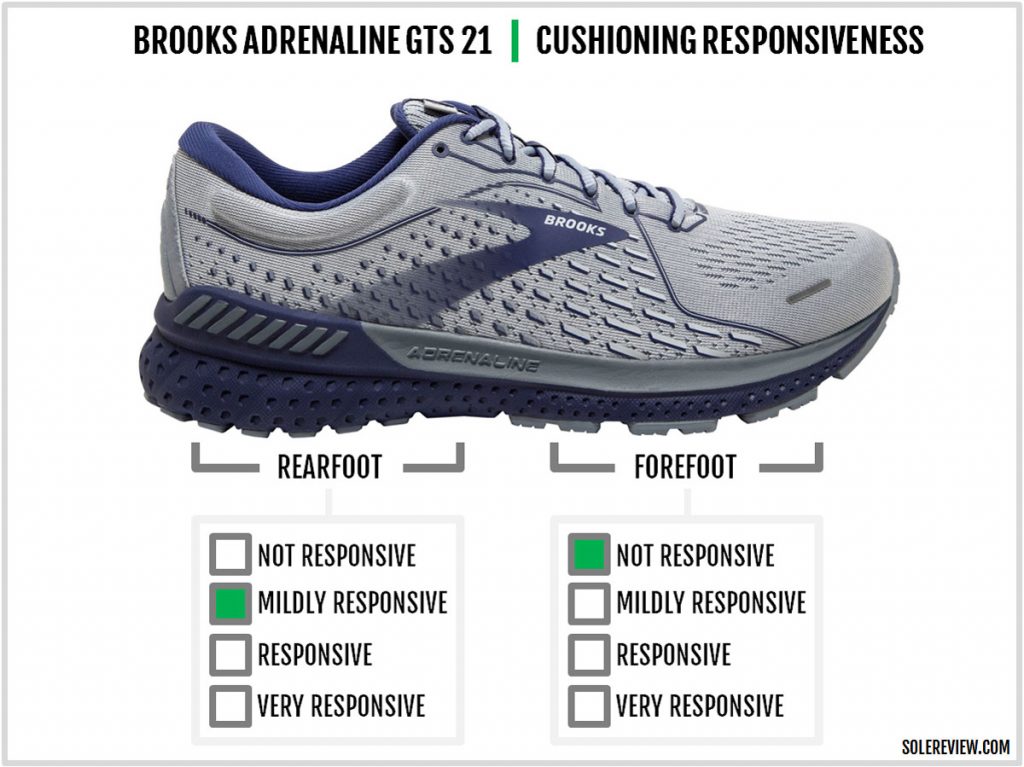
Brooks calls the midsole foam DNA Loft, but for all practical purposes, it’s an EVA foam blend. The compound doesn’t have a bouncy ride; its cushioning is muted, yet possesses an overall pleasing character.
Motion control is a trait that has come to be associated with the Adrenaline over the years. With the introduction of Guiderails on the GTS 19, that’s no longer the case. The GTS 21 (and the 20) are neutral shoes, except that the midsole has these raised sidewalls named ‘Guiderails’.
The Guiderail is something that Brooks can take the entire credit for. While raised sidewalls have made appearances now and then, it wasn’t until the 2014 Transcend that they were used as a distinguishing feature set.
Another 2021 update that makes the GTS even more neutral is the midsole that no longer uses a separate crash pad. On the GTS 20 and prior, the heel was made of a different foam.
With that gone, the ride is smoother due to improved consistency. Just so that you know, this isn’t just a Brooks thing. The Saucony Ride, Guide, and Kinvara got rid of their crash pads years ago.
In essence, the Adrenaline GTS 21 is a Ghost 13 but with Guiderails. And what exactly are the said Guiderails for?
If you hear impressive-sounding phrases such as it ‘aligns your stride’ or ‘corrects overpronation’, just take that with a huge grain of salt. For decades, the footwear industry preached the importance of medial-posts and how they ‘corrected’ pronation. If medial posts were so effective, why have brands ditched them?
So to claim the Guiderails have any role in controlling the gait is laughable at best. It’s the running shoe equivalent of a placebo, nothing more.
The only reason one should buy the Adrenaline over the Ghost is to have an increased sense of under-arch support. The lateral Guiderail is co-molded into the midsole and is firmer than the outer one.
It curves slightly outwards, so it does not press directly into the arch. There’s also a firm foam component on the inner side, but this is inside the midsole and hidden away from plain sight.
In short, the decision to buy the GTS should be purely sensory; we doubt that this design is backed by any kind of credible, peer-reviewed biomechanical science. It’s just one more thing in the crowd of marketable footwear technologies.
On the other hand, if a comfortable daily trainer is what one seeks, then the Adrenaline GTS 21 is a great candidate. It’s a very ‘safe’ shoe; the kind of safety that is found in a smooth, cushioned, and supportive ride. The kind of safety that makes the Adrenaline an easy ‘go-to’ shoe with very few flaws.
It’s a daily trainer where comfort, not speed, takes precedence. The transitions are smooth and supportive due to the newly introduced single-density midsole that’s propped with Guiderails.
THE BROOKS ADRENALINE GTS 21 vs. LAUNCH 8 GTS vs. Transcend 7
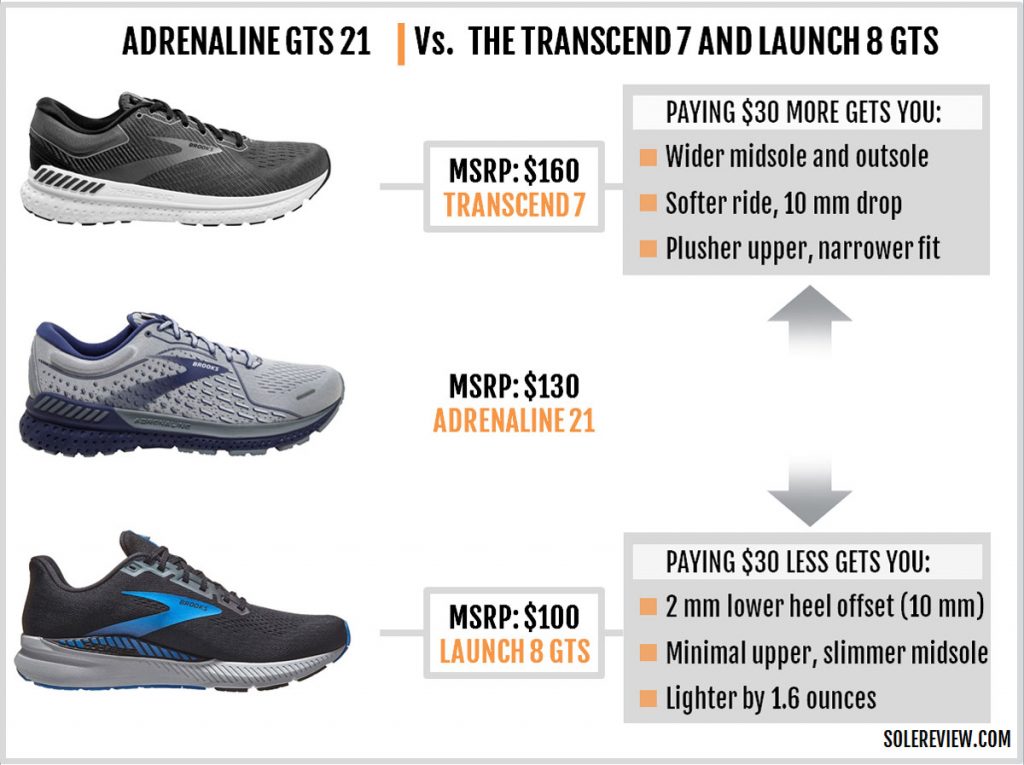
Admittedly, the Adrenaline isn’t the one for sprightly runs when one is itching to go beyond paces of 7 min/mile (4:30 min/km) and higher. The lighter Brooks Launch 8 GTS is an option here. Yes, the Launch 8 now has a GTS version – it’s the Launch but with under-arch support.
The Launch 8 is softer than the 7 with more under-the-foot comfort. That applies to the GTS too – it’s an ounce lighter than the Adrenaline with a lower profile. It’s not a racer by any stretch of the imagination, but its lighter build with a slimmer midsole makes it a better speed-run companion.
The Transcend 7 is a bulked-up Adrenaline. It’s akin to what the Glycerin 18 is to the Ghost 13; a cushioned trainer with an equally plush upper. Compared to the GTS, the T-7 is wider through the midsole while marginally outweighing the GTS.
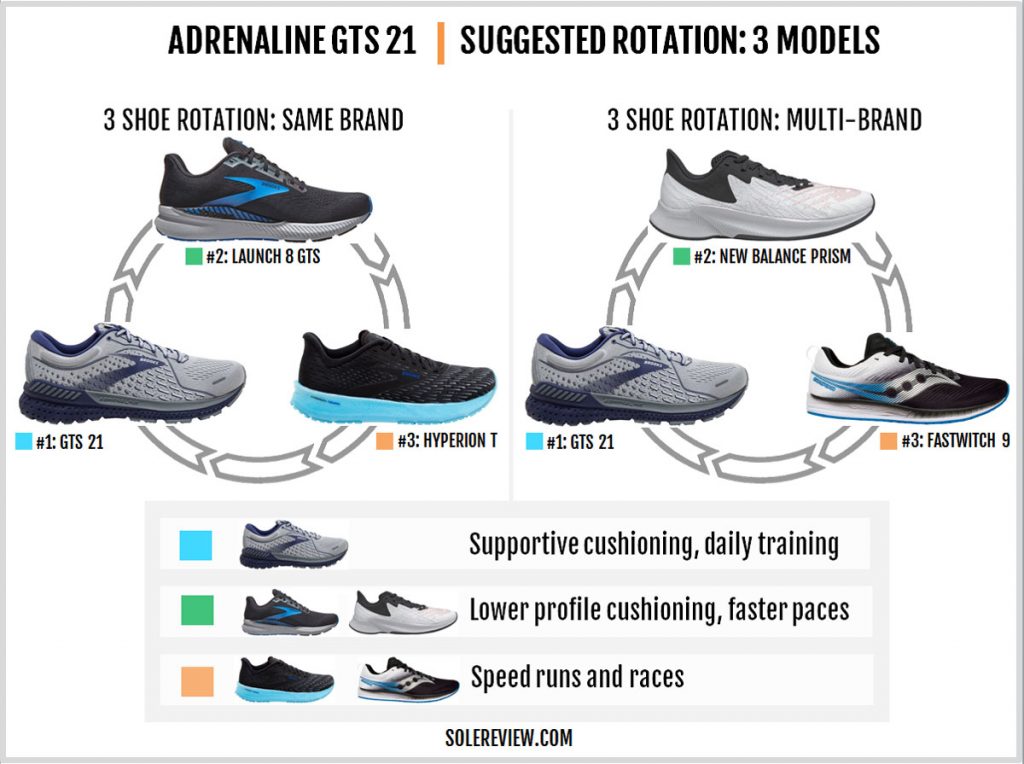
There isn’t a lot of performance gap between the Transcend and GTS, so there’s not much rotational value. However, the lighter Launch 8 GTS is a capable and versatile companion to the GTS. Outside of Brooks, the New Balance Prism is the Launch 8 GTS equivalent, but with a softer ride.
For speed runs, we recommend either the 7.3-ounce Hyperion Tempo, the Hyperion flat, or the Saucony Fastwitch 9 – a racer with a medial post.
IS THE BROOKS ADRENALINE GTS 21 DURABLE?
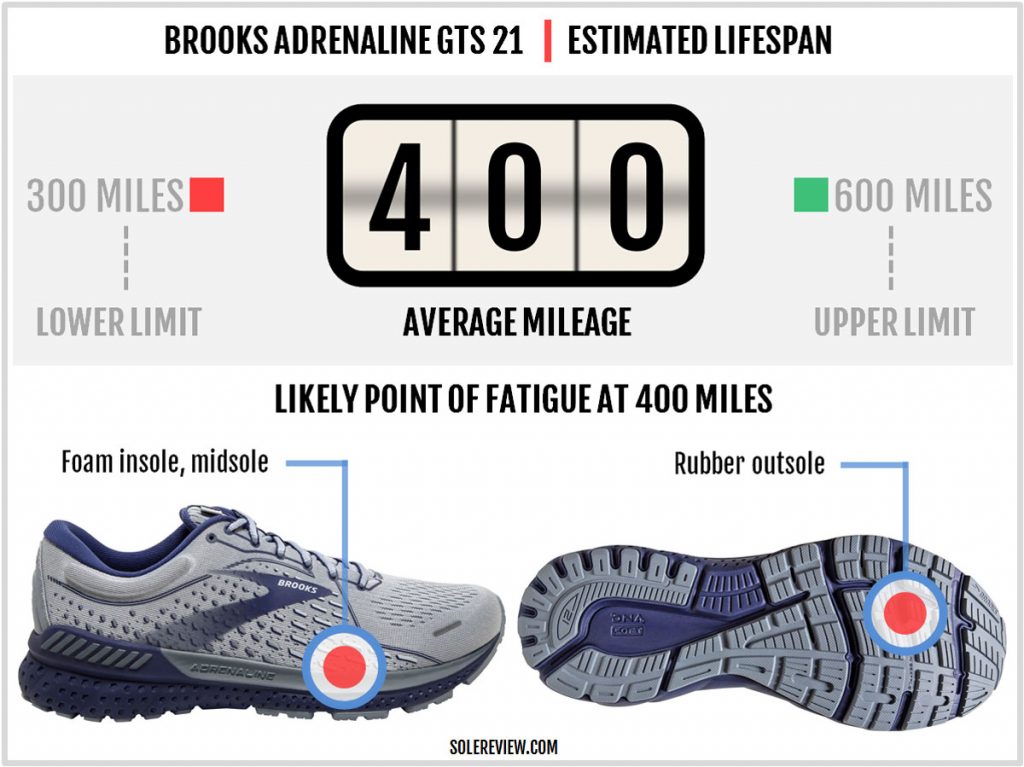
The Adrenaline GTS 21 isn’t a flimsy shoe at all. The midsole feels solid, and the outsole rubber protects most of its underside. The upper is robust too, so it’s highly unlikely anything’s going to fail.
So as with most running shoes, the flattening of the insole and the gradual wear and tear of the outsole are the only things that are going to happen to the GTS over a few hundred miles.
THE UPPER DESIGN AND FIT
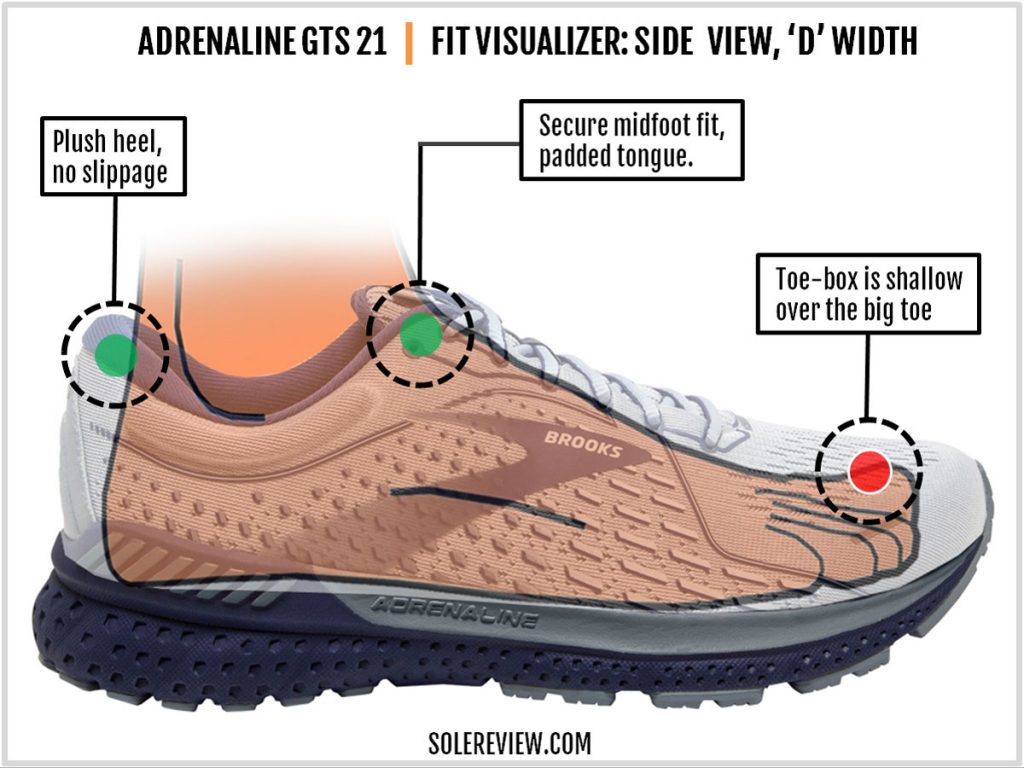
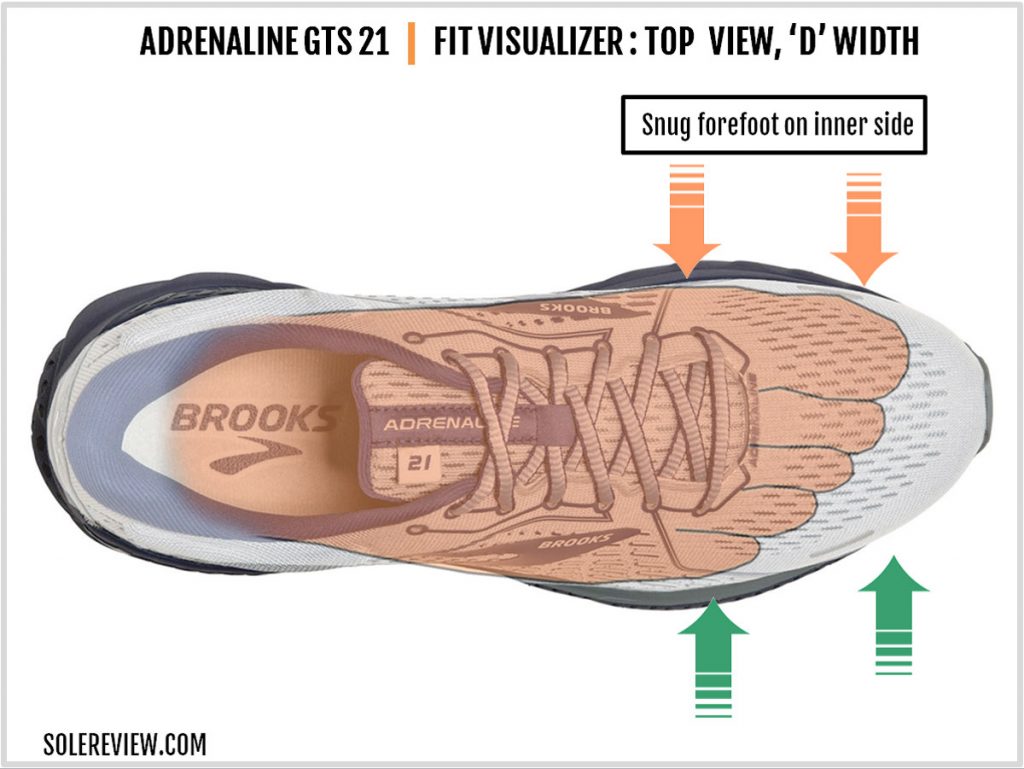
There’s only one thing on the GTS 21’s fit that needs attention. While the sizing fits true, the forefoot fit is snug on the sides and top of the big toe. One of the reasons why that happens is because Brooks chose to use a closed mesh texture on the sides, versus the more open surface of the GTS 20.
Also, the GTS 21 lacks the fused seam of the 20 – on the latter, the midfoot panel was a different mesh that was joined to the forefoot by a welded strip.
Lastly, the 21’s heel collar no longer uses a separate Achilles mesh. Switching to a single piece decreases the amount of play, thus pushing the foot ever so slightly towards the front.
Other than that, it’s the typical Brooks-ness inside the upper, and out. It’s equal parts comfortable and supportive, just like the midsole it’s glued to.
An internal counter and plush collar holds the heel securely, and the quilted tongue does a great job of filtering lacing pressure. There’s a (new) raised foam-quilted section on the outer heel, but it is decorative and serves no functional purpose. And the internal gusset attached to the tongue keeps the latter from sliding. It’s worth mentioning that the Ghost 13 doesn’t have a gusset.
An optional heel-lock lacing eyelet allows for a runner’s loop in the unlikely event the heel grip is found wanting.
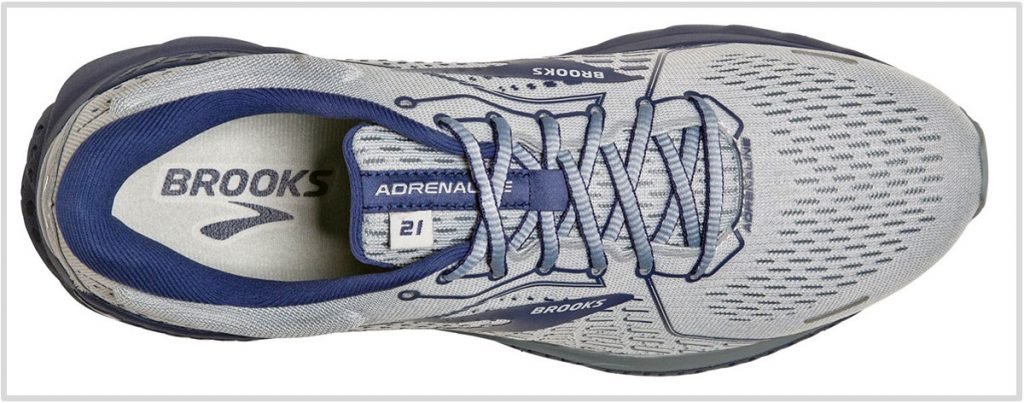
Not much takes place outside the upper. As is the case with most recent Brooks releases, the outer shell is a single piece of engineered mesh with high-density printing. The forefoot and heel have a few reflective bits for low-visibility runs.
As befits a single-piece exterior, the interiors feel seamless – because that’s exactly what is it.
Counting the regular width, the Adrenaline GTS 21 has four sideways sizes, ranging from a B (narrow) to an extra-wide. So up-sizing to a 2E or 4E will address the snug forefoot fit.
PROS AND CONS
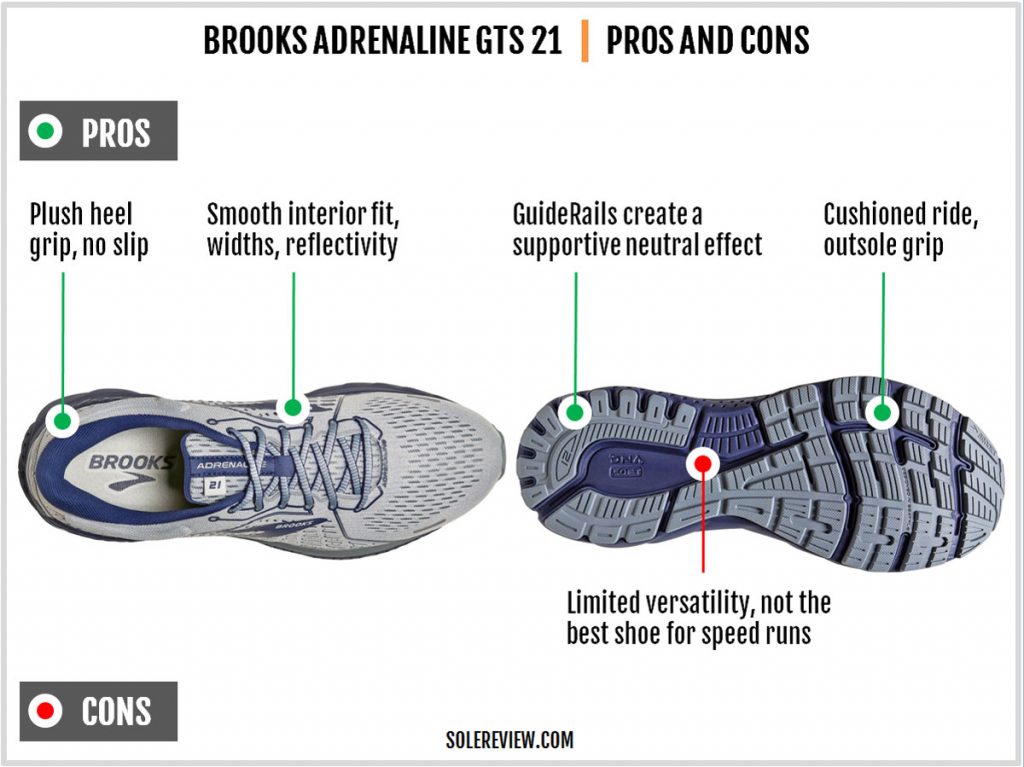
The Adrenaline GTS 21 doesn’t pretend to be anything other than a comfortable and supportive daily trainer. So calling out its lack of speed manners is more of an observation than a flaw.
Most of the Brooks goodness is available within the GTS, be it the smooth and neutral ride, or the comfortable upper with its multiple widths. The GTS 21 may not have the stability shoe traditionalism of the GTS 17 or 18, but it’s a crowd-pleaser alright.
THE BROOKS ADRENALINE GTS 21 vs. GTS 20
Two functional updates set the 21 apart from the 20. The first would be the snugger forefoot, the reasons for which have been explained in our upper fit breakout.
The second update concerns the midsole design. The GTS 21 follows the Ghost 12 to 13 upgrade path – which means getting rid of the separate crash pad and opting for a single-density primary midsole instead. The medial Guide Rail is, of course, a different density that’s co-molded with the midsole. The GTS 21’s ride is smoother as a result of these tweaks.
The GTS 21 is marginally lighter, but that’s not apparent during usage. Though the outsole styling is updated, the overall geometry is nearly identical. The crash pad is firm rubber, whereas the forefoot has strips of a softer blown rubber.
The quilted foam on the external collar is new, and are cosmetic instead of offering a performance benefit.
It’s worth upgrading to the GTS 21 if a smoother heel to midfoot transition is of interest. Else, we prefer the slightly more comfortable upper of the GTS 20; there’s more room in the front and the Achilles heel dip uses a softer mesh.
SHOES SIMILAR TO THE BROOKS ADRENALINE GTS 21
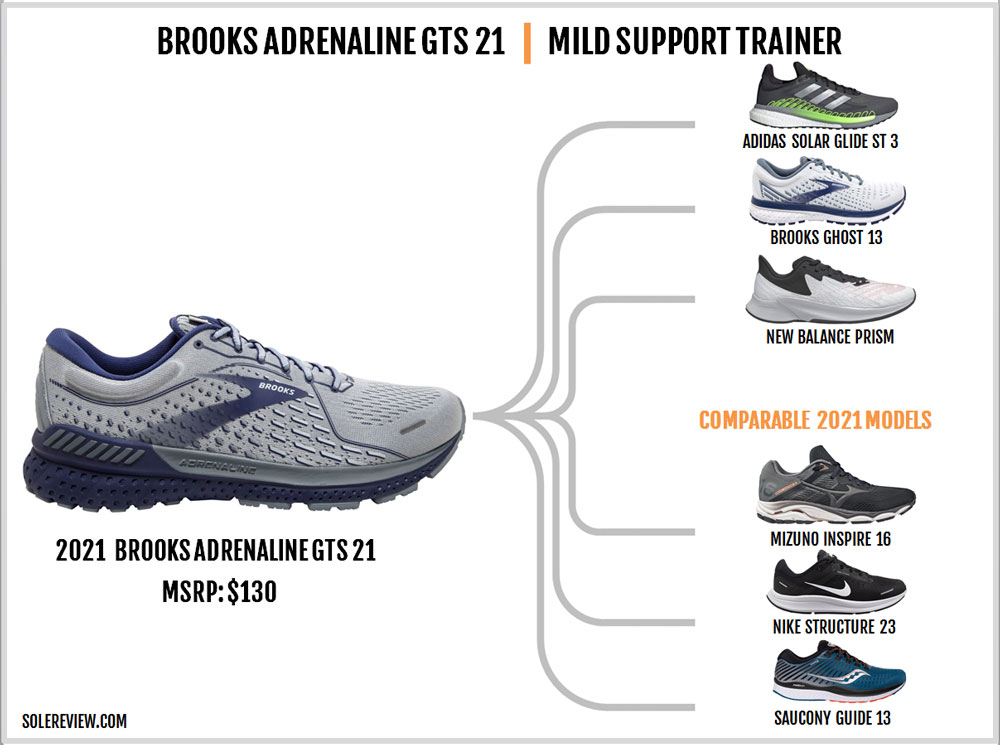
You shouldn’t be surprised to see the Ghost 13 here; it’s just like the Adrenaline, but without the exaggerated Guiderails. The ride is similar underfoot, the sizing is pretty close too. And you guessed it – the price is the same too.
Next up would be the Nike Structure 23. Now, this is unlike any other Structure we’ve run in before. It’s like a Brooks Glycerin, but with a Zoom Air bag in the front. The midsole cushioning is very neutral yet supportive – and that’s accomplished without using a medial post as a design crutch.
It makes sense to add the Mizuno Inspire 16 to the ‘supportive neutral’ list too. The Inspire has always been a different kind of running shoe, the kind that historically relied on a plastic Wave plate to deliver the stability aspect. We think this will change in the years going forward, but for now, it’s what it is.
The New Balance Fuelcell Prism would be the softest here. It’s got a quasi-stability midsole design due to its tiny ‘medial post’, and yet the rest of the midsole has a cushy character. The adidas SolarGlide ST is another, very cushioned alternative with extremely mild ‘stability’ behavior.
A firmer ride can be found in the Saucony Guide 13. The ride is pretty neutral, and the firm foam density works together with the medial support element to deliver a stable ride.
Lastly, one could consider either the Asics GT-2000 9 or the New Balance Fresh Foam 860V11 as conventional stability shoe options.

